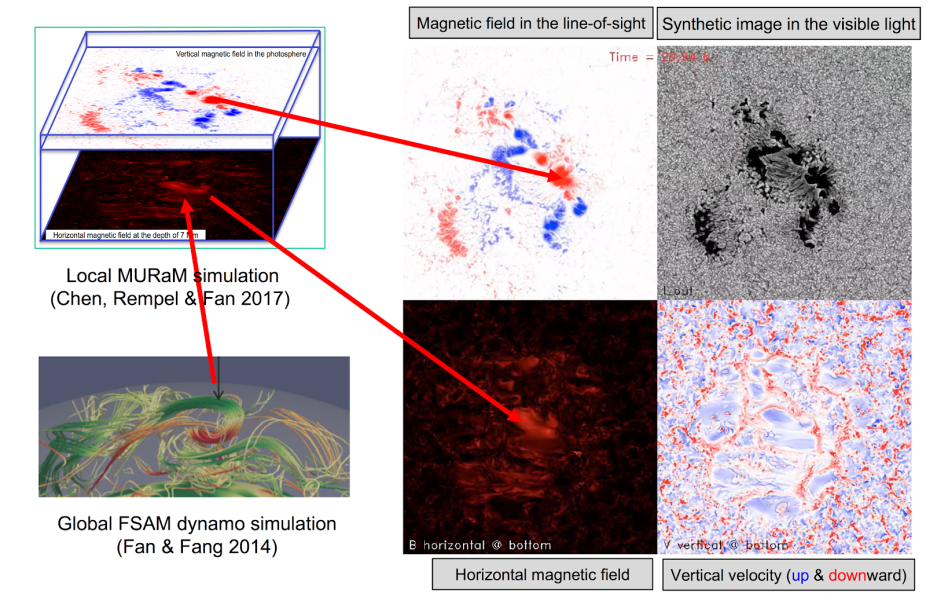SWG1: Solar-Flux Origins, Emergence, and Eruptions
Overview
Understand the origin of the solar cycle. Determine the drivers of space weather by understanding the physical processes of magnetic flux emergence, and the initiation of solar eruptions such as flares and coronal mass ejections (CMEs).
Objectives
- Identify ‘disruptive’ observations of global magnetism by exploiting state-of-the-art observations and analyses. Evaluate how these observations direct future modeling effort.
- Combine observations (in particular the magnetic field diagnostics) and MHD modeling to understand active region formation, the development of CME precursor structures, and determine the magnetic field structure and dynamics of realistic CMEs, providing the inner boundary conditions for heliospheric modeling of space weather.
- Develop a radiative solar MHD model system that extends from the solar interior (upper convective zone) to the chromosphere and coupled to a coronal MHD model, in order to study the initiation of coronal mass ejection and to provide surface magnetic flux condition for heliospheric models (in collaboration with SWG-2 and 6).
Leads
Yuhong Fan and Matthias Rempel
Research Highlight
Comprehensive models of sunspot formation

Schematic highlighting the coupling of the global FSAM dynamo model and the local MURaM radiative MHD simulation covering the upper convection zone and photosphere of the sun. A rising magnetic field bundle produced by 3D convection and rotational shear in the global FSAM dynamo simulations is imposed as lower boundary condition for the local MURaM radiative MHD simulation. The magnetic field continues to rise into the photosphere, where it eventually forms a group of sunspots. The strong magnetic field concentrations in the photosphere exceeding 3000 Gauss have a dark appearance in intensity and show asymmetries similar to those of sunspots observed on the sun.